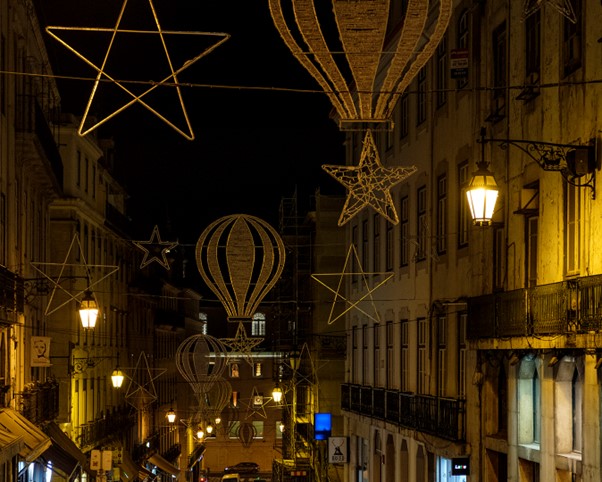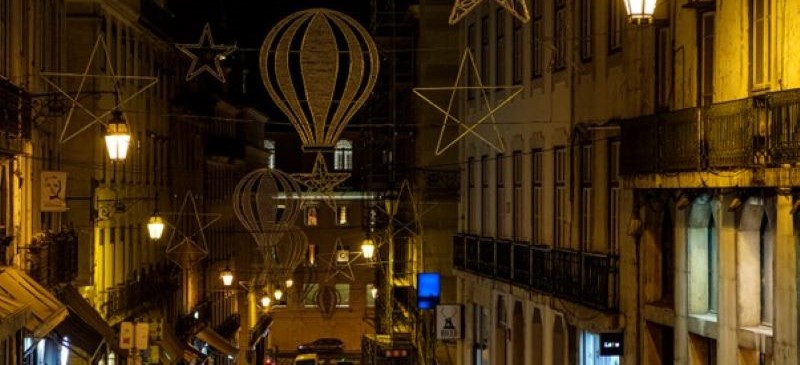Create Streets’ senior architectural designer, Robert Kwolek suggests how we might add warmth to our streets in winter through lighting.
Christmas lights add a welcome cheer to our streets and buildings when the days get darker and shorter as winter closes in. The warm glow on our streets and buildings provides a welcome contrast to the encroaching darkness. When the holidays end and the lights dim our surroundings plunge into a cold and desolate January. It’s no wonder the month is often labelled as the most melancholic of the year.
The terminology itself, “Christmas lights,” implies a purpose tied exclusively to the holiday season. Beyond the occasional reindeer or angel-shaped designs, however, there is nothing inherently Christmassy about them. This raises a question: What if we were to view the lights as more than mere Christmas decorations? What if, instead, we saw them as winter lights and kept them on throughout the short, dark winter months, warding off dreariness and gloom?

Neutral “Christmas” lights in Lisbon
Scandinavians, more expert than most in getting through the dark months, do just that. The Danish term “hygge,” pronounced “hooga,” encapsulates a sense of warm togetherness, often intertwined with the ambiance created by soft and cozy lighting. This concept is not confined to Denmark alone. In Sweden, for instance, it is customary to place lamps or candles on window sills, not only illuminating the interior of a room but creating a wonderfully evocative atmosphere which spills onto the streets outside. It is a simple yet profound acknowledgment that lighting can transform not only private spaces but has a civic purpose, too.
The transition from the festive glow of December need not be an abrupt departure into a stark and gloomy environment and the associated psychological toll of prolonged darkness. The January blues which many people suffer from could be mitigated by the ongoing presence of these lights. They could serve as a reminder that even in the coldest and darkest months, there is warmth and beauty to be found. We should therefore consider the positive impact of retaining the enchanting glow of lights through at least February.
Furthermore, this approach may result in economic benefits. The post-holiday slump in retail and tourism could be mitigated by maintaining an inviting and festive atmosphere in city centres and along high streets. The allure of well-lit streets might attract locals and visitors alike, promoting economic activity during a period which is traditionally characterized by a lull in spending.
While this once may have been impractical from the perspective of energy consumption, energy-efficient LED technology makes it feasible to illuminate public spaces without an exorbitant increase in energy consumption. So long, of course, as lights with a warm colour temperature are used, otherwise the benefits would be entirely negated.
It may initially prove a challenge to reset our collective mindset and rebrand Christmas lights as “winter lights” but it should prove worth the effort. As cultural shifts go, it’s not as significant as some. We should see it as an opportunity to infuse warmth, coziness and appreciation of public health benefits into the cold and dark months of winter, transforming our streets into altogether more cheerful public spaces.
Robert Kwolek is a Senior Architectural Designer at Create Streets


